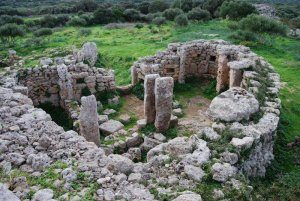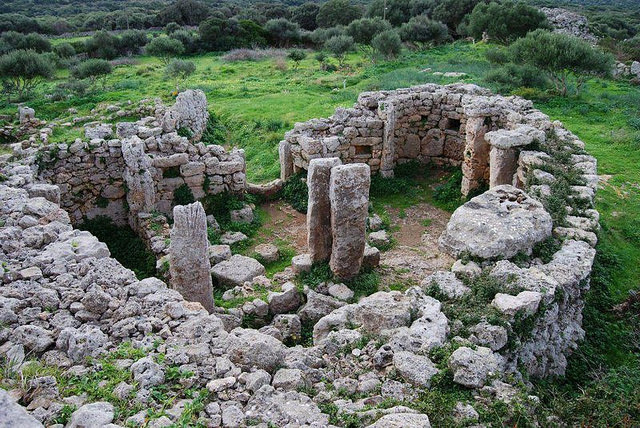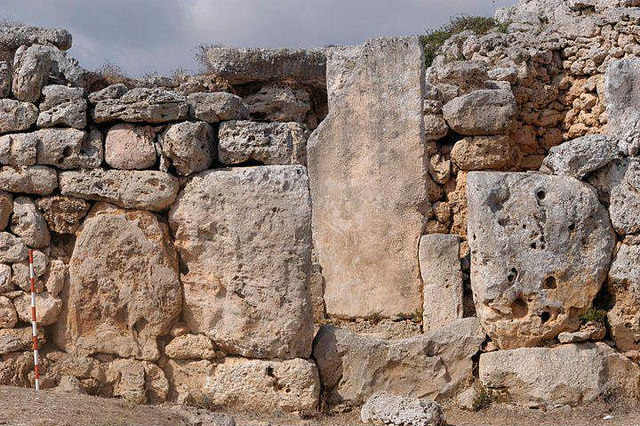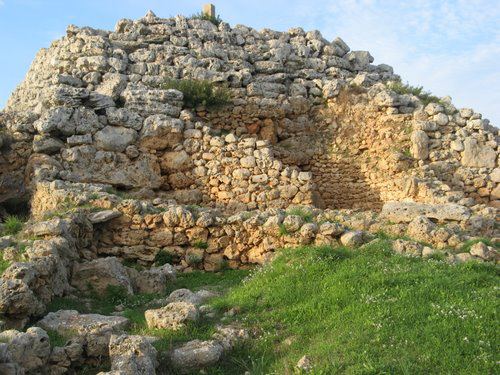
After nearly 30 years, a team of archaeologists will be returning once again to the site of So na Cacana on the island of Menorca, Balearic Islands, Spain, to renew investigations of a prehistoric sanctuary complex that archaeologists believe represented the remains of the Talaiotic Culture , a prehistoric culture that flourished, particularly on the islands of Majorca and Menorca, during the 1st Millenium BCE.
“Between 1982 and 1987, archaeological excavations made by the Museum of Menorca found two sanctuaries [at So na Cacana] with taula and other buildings, probably religious, where there were only scattered remains half hidden by the vegetation,” stated the project principle investigators. The ancient settlement remains are located about six km away from the municipality of Alaior. The site features a tower-like monument resembling a large rectangular talaiot (Bronze Age megalithic structure) at the highest point of the area and possibly dated to before the 10th century B.C., which may contain an inner chamber with chapels; a second, smaller tower or talaiot; two sanctuaries with taula; two talaiotic houses; two hypogea; and several structures not yet excavated. The investigators theorize that the site had a religious purpose.
Beginning June 15, 2015 and running for six months, the site investigators plan to field a team that will explore a number of structures and features in the site area, including a funerary hypogeum dated from the 15th – 8th centuries BCE, an Iron Age sanctuary or taula (6th – 3rd centuries BCE), an Iron Age (6th – 3rd centuries BCE) house structure, a Roman period (2nd – 4th centuries CE) agricultural-related structure, and a 9th – 10th century CE Islamic necropolis.
_______________________________________________
 Above and below: Views of the megalithic structures at So na Cacana. Courtesy Tanyt
Above and below: Views of the megalithic structures at So na Cacana. Courtesy Tanyt
___________________________________________________________
 ____________________________________________________________
____________________________________________________________
 ____________________________________________________________
____________________________________________________________
The team leadership is currently calling on students and volunteers who may be interested in participating in the surveys and excavations, which will entail in-depth training and education. “TANYT (the organization managing the field work) is now responsible for this archaeological site,” write the investigators, “and this cultural association aims to develop a field school and experimental camp focused on theoretical and practical training for students and professionals in archaeology and cultural heritage conservation. So the training in the field school includes hands-on intervention in different sectors of the site, each one representing a cultural stage in Menorca prehistory, proto-history and history (Bronze Age, Iron Age, Roman Period and Medieval Period).”
Individuals interested in learning more about the site and how to participate my contact the Asociación Tanyt, Menorca, at [email protected] and can visit the website at http://sonacassana.jimdo.com/.
_______________________________________________________
 Read more in-depth articles about archaeology with a premium subscription to Popular Archaeology Magazine.
Read more in-depth articles about archaeology with a premium subscription to Popular Archaeology Magazine.
In addition, the latest Popular Archaeology ebook is now available.
______________________________________________
Travel and learn with Far Horizons.
____________________________________________
 Popular Archaeology’s annual Discovery Edition eBook is a selection of the best stories published in Popular Archaeology Magazine in past issues, with an emphasis on some of the most significant, groundbreaking, or fascinating discoveries in the fields of archaeology and paleoanthropology and related fields. At least some of the articles have been updated or revised specifically for the Discovery edition. We can confidently say that there is no other single issue of an archaeology-related magazine, paper print or online, that contains as much major feature article content as this one. The latest issue, volume 2, has just been released. Go to the Discovery edition page for more information.
Popular Archaeology’s annual Discovery Edition eBook is a selection of the best stories published in Popular Archaeology Magazine in past issues, with an emphasis on some of the most significant, groundbreaking, or fascinating discoveries in the fields of archaeology and paleoanthropology and related fields. At least some of the articles have been updated or revised specifically for the Discovery edition. We can confidently say that there is no other single issue of an archaeology-related magazine, paper print or online, that contains as much major feature article content as this one. The latest issue, volume 2, has just been released. Go to the Discovery edition page for more information.
____________________________________________







